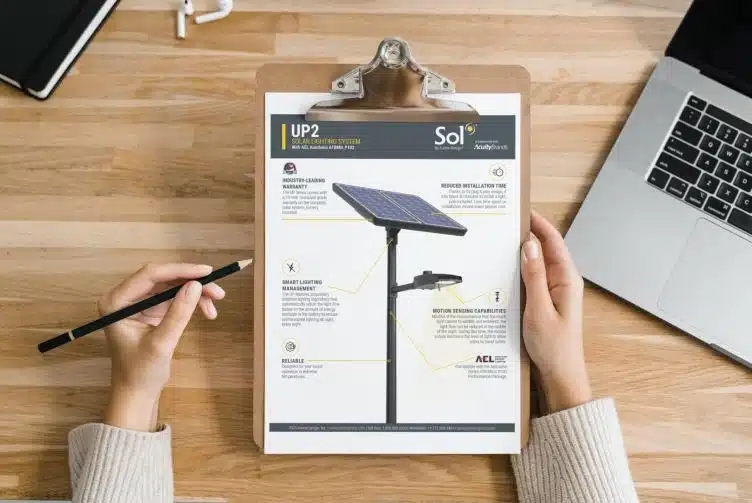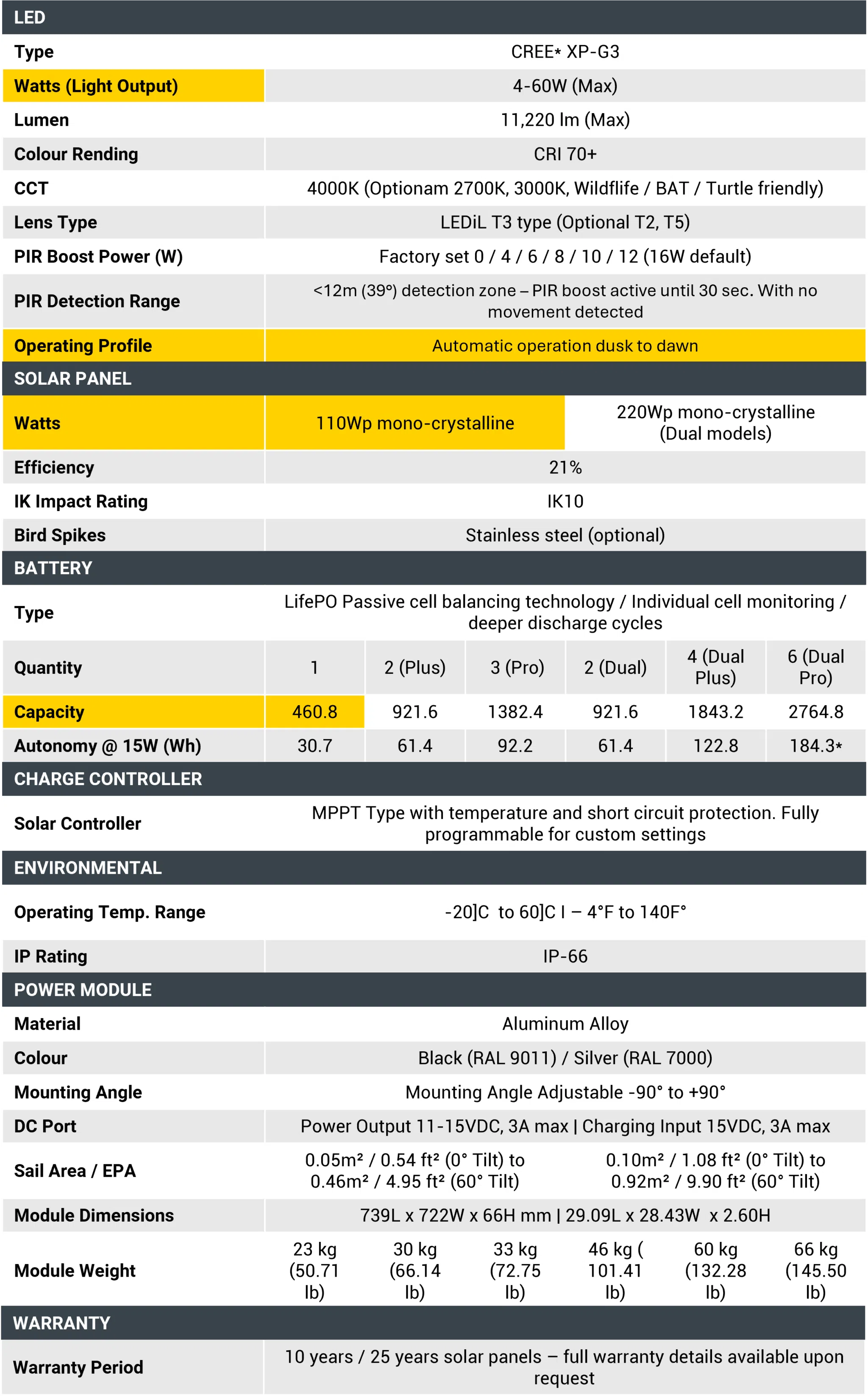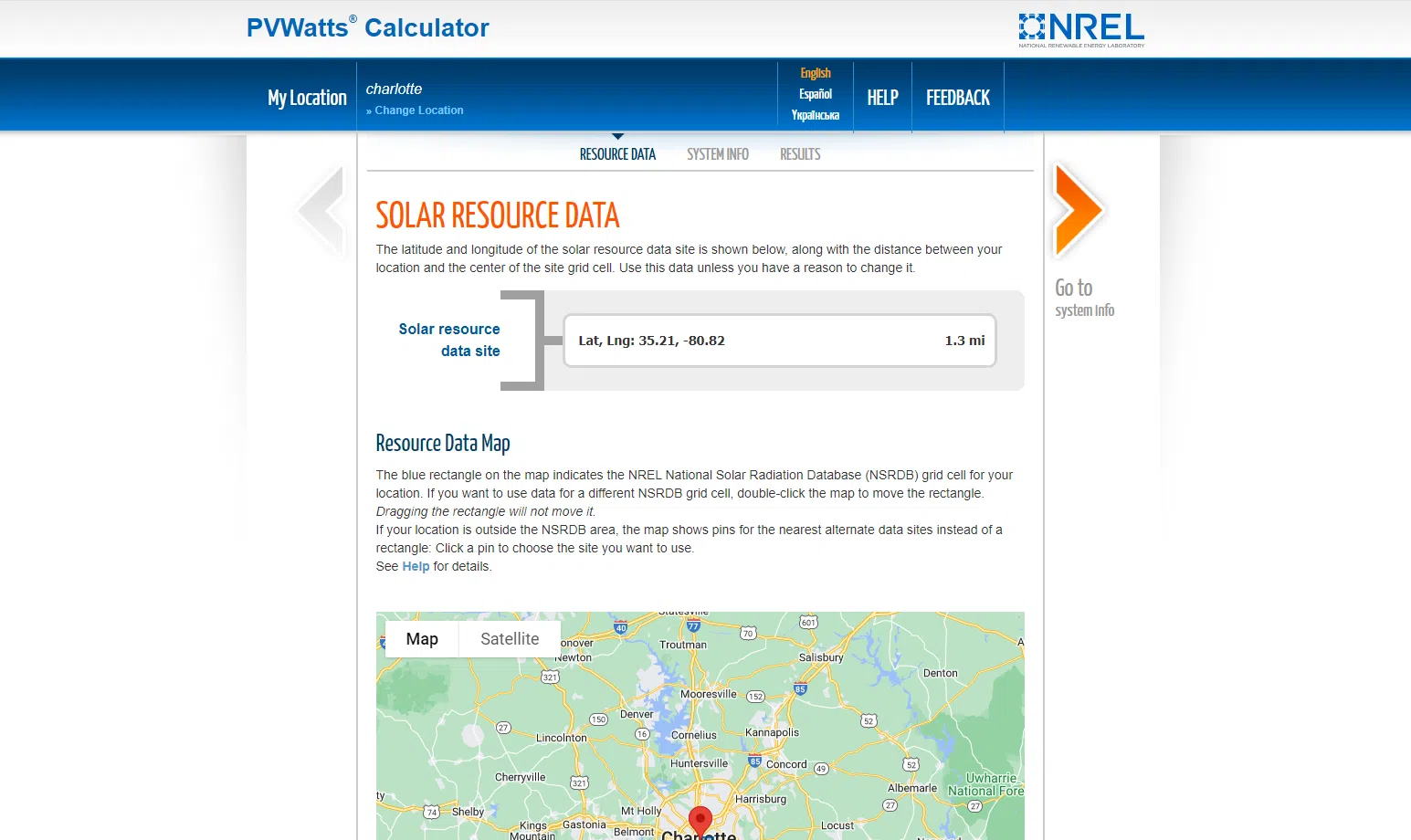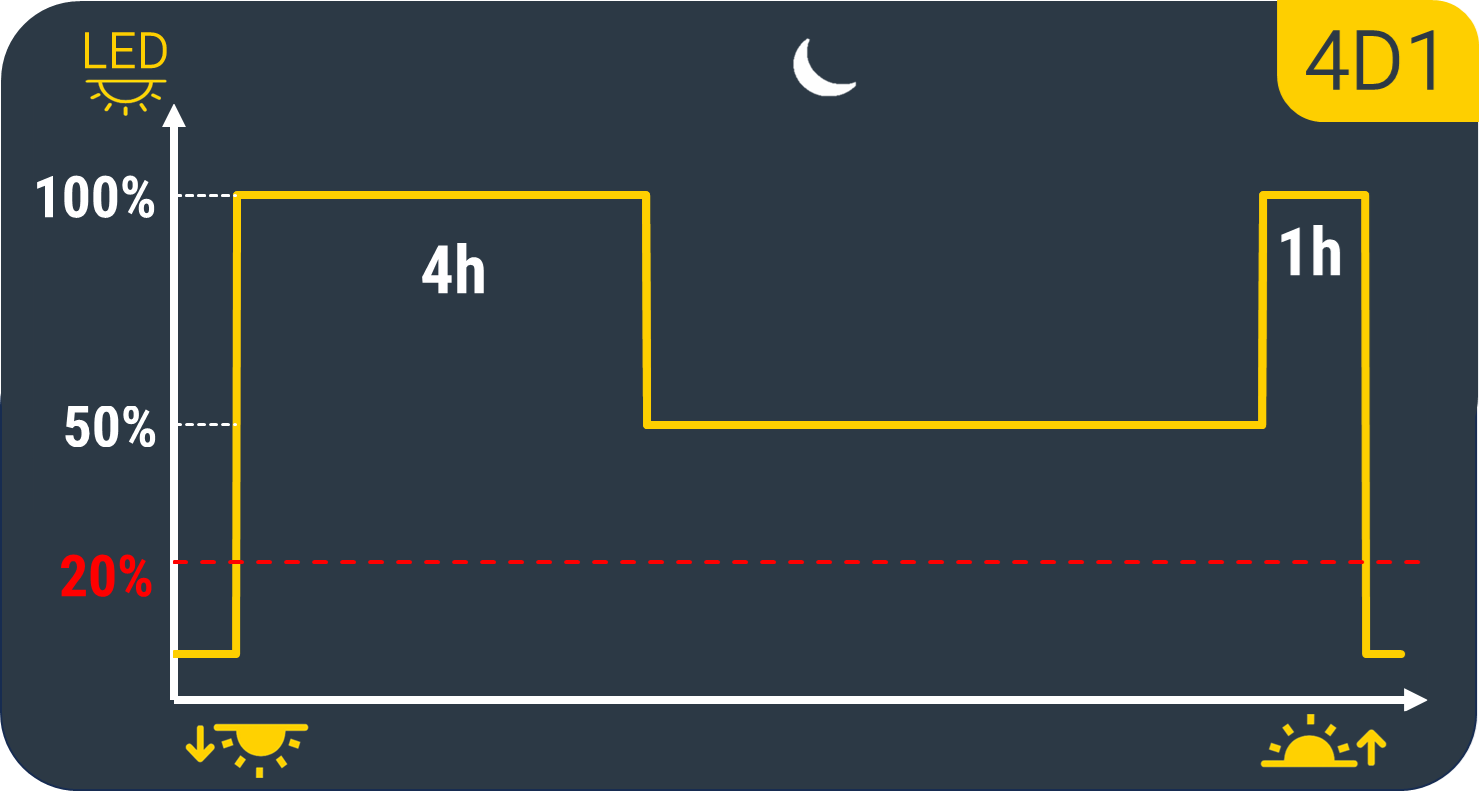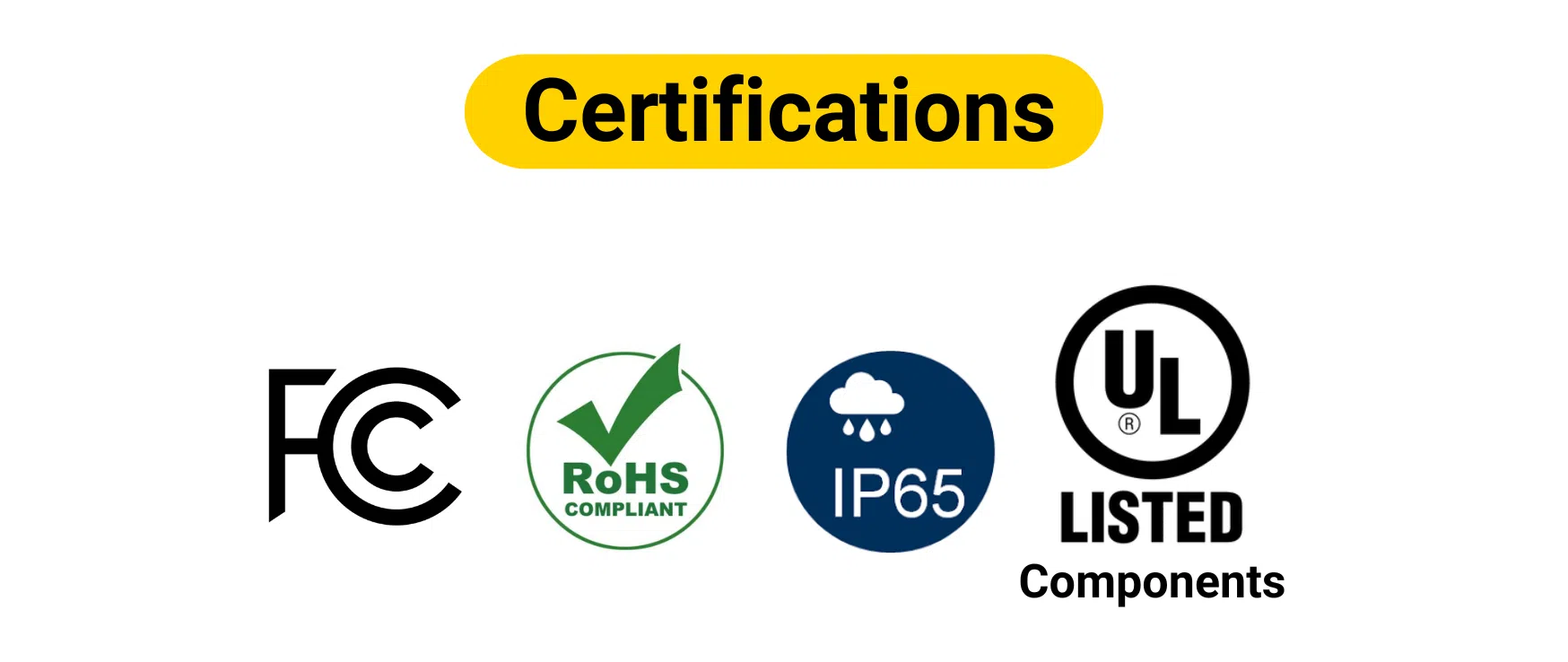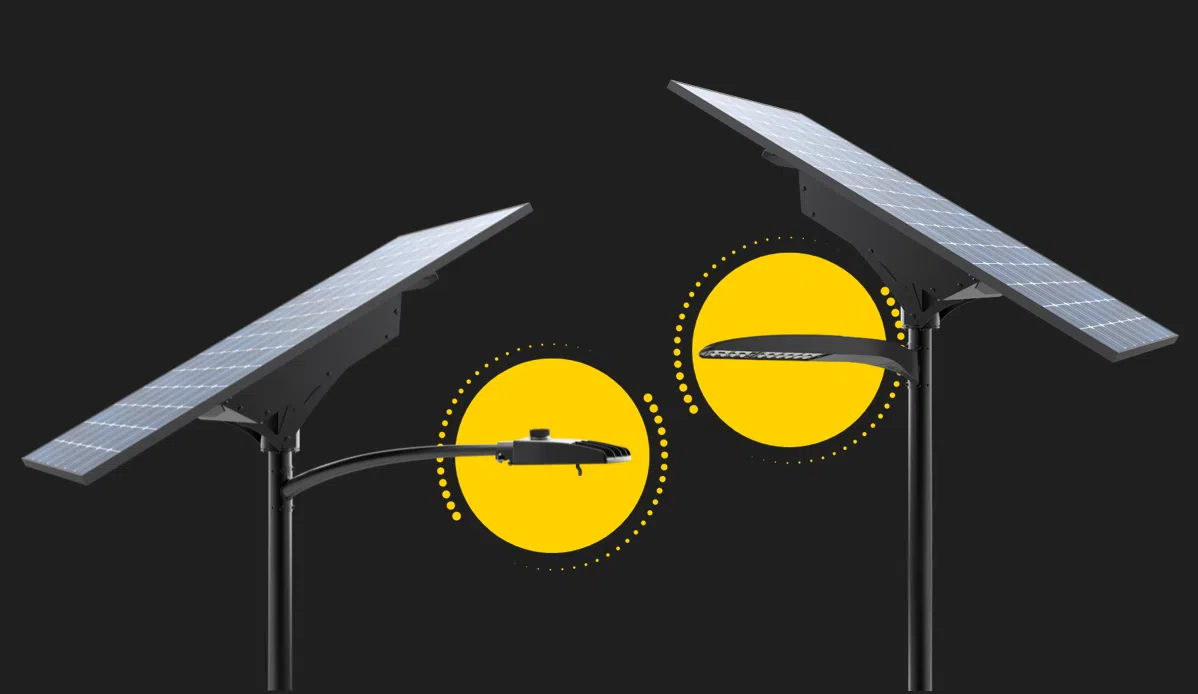Â
So, you've decided to incorporate solar lighting into your next project. Great choice! Now comes the tricky part—deciding which product and manufacturer to go with.
Â
Unlike shopping for an air fryer or fitness tracker, solar lighting doesn't have a Wirecutter or CNET to guide you. Instead, you're left with... spec sheets.
Â
What exactly is a spec sheet, you ask? It’s the document that holds all the crucial details you need to compare products and figure out which one fits your project best. It can also highlight features that set manufacturers apart, like warranties, certifications, and testing standards.
Â
Spec sheets are essential for solar lighting buyers, but they can feel overwhelming if you’re not familiar with the terminology. What do all those numbers and acronyms mean? Which ones really matter? And how can you separate fact from marketing hype? We’re here to help you decode them!
Â
The Info You Actually Need
Â
The good news is that you don’t need to understand every detail on a spec sheet to make a smart purchase. These documents often contain tons of technical jargon, and not all of it applies to your situation. Your top priority should be figuring out whether the product you’re considering will sustainably power your project (i.e., does it have enough solar collection and battery capacity to run the light at the required output for the desired duration?). To do this, you only need four key pieces of data:
Â
- The size of the solar panel (in watt-peak – Wp)
- The output of the fixture (in watts – W)
- The size of the battery (in watt-hours – Wh)
- The operating profile or runtime (how long the system needs to run for, at what light level)
- These details should be easy to spot on most spec sheets. However, some manufacturers may omit certain characteristics to hide limitations in their products. Missing information isn’t automatically a dealbreaker, but it should raise questions about the product’s reliability and the level of customer service you can expect.
Â
Here’s an example of a spec sheet that includes all the necessary details:
Â
Â
Once you have these inputs, you can do some basic math to determine whether the system will meet your needs.
Â
Solar Panel Collection
Â
How large should the solar panel be? Start by finding the average number of peak sun hours (hours of strong sunlight) your location gets during the worst month for solar insolation. The NREL’s PVWatts Calculator is a fantastic tool for this.
Â
Let’s say your project is in Charlotte, NC, where the peak sun hours in December are 3.73 (assuming a 30° panel tilt to maximize sunlight). Multiply the peak sun hours by the panel size in watt-peak (Wp) to calculate the maximum daily solar charging capacity:
Â
3.73 x 110Wp = 410 Wh
Â
This value assumes optimal conditions, but we know that 3.73 is an average, not the lowest possible. There will be days with less—or even no—solar collection. That’s why it’s crucial to factor in an adequate array-to-load ratio (ALR) to ensure the system can recover after a night of use, even during suboptimal solar collection.
Â
410 / 1.2 = 341 Wh
Â
Skipping this step and assuming an ALR of 1:1 could work in summer but will likely lead to system failure in winter when solar collection drops.
Â
Pro Tip: Reputable solar lighting companies apply derating factors to account for real-world variables like dust, snow, shade, and temperature. Derating factors aren’t listed on spec sheets, but they’re worth asking about. If a company doesn’t factor in deratings, the system’s autonomy will fall short of advertised claims.
Â
Fixture Output and Operating Profile
Â
You now know how much energy is available, but you still need to calculate how much energy is needed to run the fixture for the duration you require. For this, you’ll need the length of the longest night, which you can easily find using NOAA’s Solar Calculator.
Â
Â
For our Charlotte example, the longest night is 14 hours (from 5:18 PM to 7:18 AM on December 21). Next, check the spec sheet for the fixture output (in watts). Often, there’s a range (e.g., 4–60W). If your project has a specific lumen requirement, you can use this and the fixture’s efficacy to guide your choice.
Â
For instance, if you need 4,500 lumens and your fixture has an efficacy of 150 LPW, you’ll need at least a 30W fixture (4,500 / 150 = 30W). Multiply the fixture output by the longest night to calculate the daily load:
Â
30W x 14 = 420Wh
Â
This is the amount of energy the solar panels must recharge daily. In our example, the 110Wp panel wouldn’t be sufficient (since the maximum available load is 341Wh, and 420Wh exceeds that).
Â
That doesn’t mean the system is a no-go—it just means you’ll need to adjust the load. You can use a lower-power fixture or change the operating profile. For example, instead of running the light at full brightness all night, you could reduce output in the middle of the night.
Â
A 4D1 profile delivers 100% output for the first four hours, dims to 50% for the next nine hours, and returns to 100% one hour before dawn. Here’s how the math works:
Â
30W x 5 = 150Wh
30W x 50% x 9 = 135Wh
150 + 135Wh = 285Wh
Â
Â
Since 285Wh is less than the max load of 341Wh, the 110Wp panel, 30W fixture, and 4D1 operating profile would work.
Â
Battery Capacity and Chemistry
Â
When it comes to solar lighting, batteries make all the difference. A system with the wrong battery might last six months before failing or perform flawlessly for five years or more. So, getting this right is crucial.
Â
The first thing to know is that there are different types of batteries. While this might seem obvious, many manufacturers offer just one type, so it’s worth mentioning. Sol offers three chemistries, and we have a guide to help you understand the differences.
Â
The best battery for your project depends on several factors—read the guide!—but one key thing to focus on is autonomy, or how long the battery can function without recharging. Without adequate autonomy, the system will shut down when it can’t collect enough solar energy.
Â
Solar lights should always have enough battery capacity to last two full nights. Returning to our example, we can multiply the load by two to start calculating the minimum battery capacity:
Â
285Wh x 2 = 570Wh
Â
However, you also need to account for the fact that batteries shouldn’t be fully discharged. Different batteries have varying recommended depths of discharge (DOD), which is the percentage of the battery’s capacity that can safely be used.
Â
Lead-acid batteries can be discharged to 25%, while lithium batteries can be discharged to 70%. Over-discharging a battery beyond this threshold will significantly shorten its lifespan.
Â
Just as we did with the array-to-load ratio, we need to factor in DOD. Here’s how you do it (assuming the system uses a lithium battery):
Â
570Wh / 0.7 = 814Wh
Â
Looking at the example spec sheet again, a single battery has a capacity of 460.8Wh. To meet the two-night autonomy requirement, the system would need two batteries.
Â
Caution: Some manufacturers ignore recommended DOD levels, leading to systems that are, in some cases, drastically undersized. Smaller batteries might save money upfront, but the savings are hardly worth it if the system fails on the first day without solar.
Â
Other Considerations
Â
Now that you understand solar sizing, you should be able to identify when a system will and won’t work for your project. That’s something to celebrate! But before we wrap up, there are a few more things to look for in spec sheets.
Â
Warranty
Â
Even if federal funding and other grants cover a significant portion of the cost, solar lighting remains a substantial investment. Warranties can give you peace of mind, allowing you to repair or replace the system if it doesn’t work as promised.
Â
Most spec sheets include warranty information, often something like a “5-year limited warranty†or “10-year warranty, excluding battery.†It’s wise to check whether the warranty is full or limited and what it specifically covers. A common practice is to offer full warranty coverage for the system but prorate battery coverage.
Â
Â
It’s important to note that “lifespan†and “warranty†are not the same. Spec sheets often include lifespan estimates for components (solar panels, for instance, can last up to 25 years), but that doesn’t mean the manufacturer is obligated to fix or replace them. For that, you need a warranty.
Â
>>Sol proudly offers a 10-year warranty on all its solar lighting systems, including the battery.
Â
Certifications and Testing Standards
Â
Certifications are one of the best ways to independently verify manufacturers’ claims about their products, as well as overall safety and regulatory compliance. Certificates are awarded by independent entities like the International Electrotechnical Commission (IEC) and the Institute of Electrical and Electronics Engineers (IEEE).
Â
Here are a few examples:
Â
Â
You can also check if a product has undergone independent testing—specifically, LM-79, a standardized IES-approved method for measuring LED products’ optical and electrical characteristics. LM-79 is the only test that provides verifiable data on the output and efficacy of the complete fixture (not just the bare LED chip), making it a key metric and comparison point.
Â
>>Read more about LM-79 and efficacy
Fixture Characteristics
Â
We’ve covered fixture output as it relates to sizing, but you should also explore the fixture more broadly, starting with, “What is it?†and “Where does it come from?â€
Â
Manufacturers take two main approaches to fixtures—building their own or using off-the-shelf components. Neither approach guarantees a high-quality product.
Â
Â
Building in-house is challenging. LED fixtures involve numerous intricate components like chips, drivers, heat sinks, and optics. When a company tries to develop solar engines and other parts simultaneously, keeping pace with rapidly evolving LED technology can be difficult. Think “Jack of all trades, master of none.â€
Â
Using off-the-shelf components has its own set of problems. While the output of cheap, imported LEDs can look impressive, they often have poor light quality, thermal management, and optical controls—not to mention limited warranties and support.
Â
Our solution? Leave the lights to the experts. Tier-1 manufacturers like Acuity Brands have a long-standing reputation for delivering high-performance fixtures for various applications, including solar. Their fixtures spread light evenly, avoid glare and light pollution, and maintain brightness—up to 100,000 hours (over 11 years)!
Â
Wrapping Up
Â
Understanding and comparing solar lighting spec sheets might seem intimidating, but it’s manageable with the right knowledge and tools. Hopefully, this article has equipped you to navigate the complexities of solar lighting with confidence and helped you choose the best product for your needs.
Â
Have any questions about spec sheets—or anything else? Our team of solar lighting experts would love to help.
Â
Coating machine,Packaging machinery,film turning machine,Package Turnover Machine
AGILOR , https://www.agilorpackage.com
